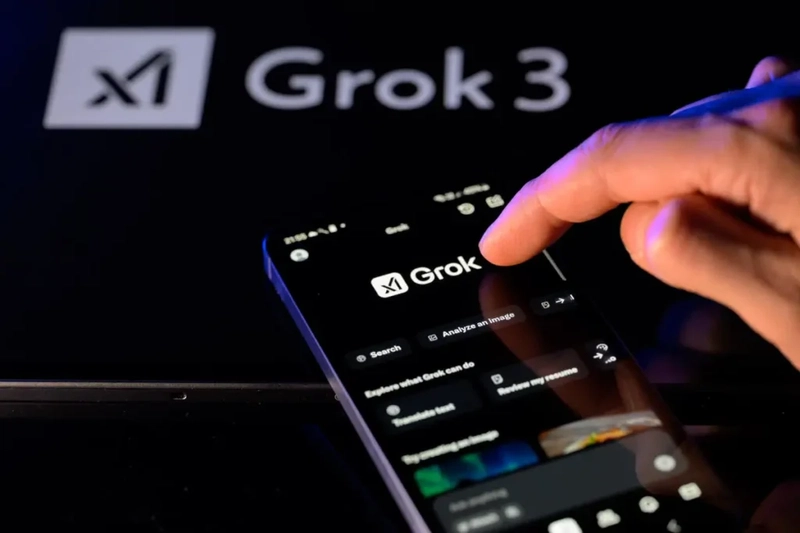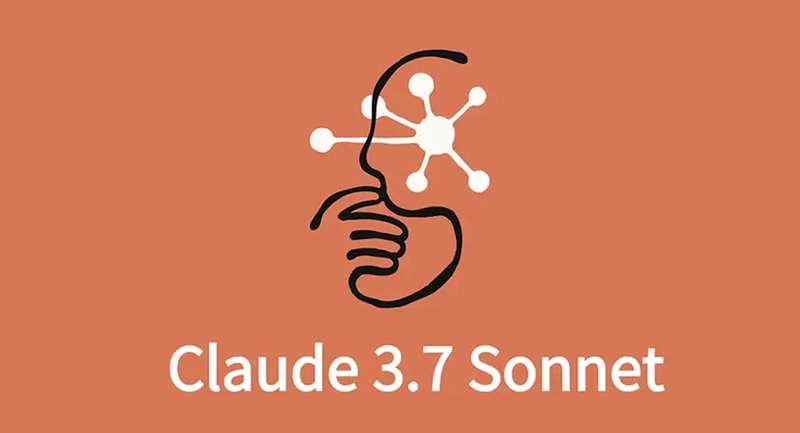In the rapidly evolving landscape of artificial intelligence, two models have emerged as frontrunners: Grok 3 by xAI and Claude 3.7 Sonnet by Anthropic. Both are designed to push the boundaries of AI capabilities, but how do they stack up against each other? This article delves into a comparative analysis of these models, examining their features, performance, and potential applications to determine which stands out as the superior AI solution.
What is Grok 3? Pushing the Limits of AI Reasoning
Launched by xAI in February 2025, Grok 3 is touted as the company's most advanced AI model to date. Elon Musk has referred to it as the "smartest AI on Earth," highlighting its enhanced reasoning capabilities and substantial increase in computing power over its predecessors.
Key Features of Grok 3:
- Advanced Reasoning: Grok 3 employs reinforcement learning at an unprecedented scale, refining its chain-of-thought process to tackle complex problems effectively.
- Extended Thinking Duration: The model can engage in reasoning sessions lasting from seconds to minutes, allowing for in-depth problem-solving.
- Enhanced Performance: Grok 3 has demonstrated exceptional results across various benchmarks, including graduate-level science knowledge and mathematical problem-solving.
What is Claude 3.7 Sonnet: A Hybrid Approach to AI Reasoning
Introduced by Anthropic in February 2025, Claude 3.7 Sonnet represents a significant advancement in AI reasoning. Dubbed the first hybrid reasoning model, it combines near-instant responses with extended, step-by-step thinking, providing users with flexibility based on their needs. citeturn0search1
Key Features of Claude 3.7 Sonnet:
- Hybrid Reasoning: Claude 3.7 Sonnet offers both rapid responses for straightforward queries and detailed reasoning for complex tasks, enhancing user experience.
- State-of-the-Art Coding: The model excels in coding tasks, delivering significant improvements in content generation, data analysis, and planning.
- Expanded Context Window: Upcoming upgrades are set to increase the context window from 200K to 500K tokens, allowing for the processing of larger datasets in a single session.
Performance Comparison: Grok 3 vs. Claude 3.7 Sonnet
Reasoning Capabilities
Both models have demonstrated impressive reasoning abilities. Grok 3's reinforcement learning approach allows it to tackle complex problems effectively, while Claude 3.7 Sonnet's hybrid reasoning model provides flexibility in response times and depth. The choice between the two may depend on the specific requirements of the task at hand.
Coding and Content Generation
Claude 3.7 Sonnet has been recognized for its excellence in coding tasks, offering state-of-the-art capabilities in code generation and problem-solving. Grok 3 also demonstrates advanced coding skills, with performance metrics indicating its proficiency in code generation and problem-solving.
Knowledge Integration and Real-Time Processing
Grok 3's integration with xAI's DeepSearch engine allows it to access and process real-time data, enhancing its ability to provide up-to-date information. Claude 3.7 Sonnet's recent addition of web search capabilities further bridges the gap between AI-generated responses and current events.
User Experience and Accessibility
Interaction Modes
Claude 3.7 Sonnet's hybrid reasoning model offers users the option to choose between quick responses and detailed analyses, tailoring the interaction to their needs. Grok 3's extended thinking duration allows for in-depth problem-solving, which can be beneficial for complex tasks requiring thorough analysis.
Integration and Deployment
Grok 3's integration with platforms like X (formerly Twitter) provides users with seamless access to its capabilities within their social media environment. Claude 3.7 Sonnet's availability through Anthropic's API and cloud services allows for flexible deployment across various applications.
Ethical Considerations and Content Moderation
Both models have implemented measures to address ethical concerns and content moderation. Claude 3.7 Sonnet's design emphasizes safety, aiming to prevent the generation of harmful or inappropriate content. Grok 3's capabilities, while advanced, include fewer standard content guardrails, leading to varied and sometimes controversial outputs.
The price of Claude 3.7 and grok3
| Category | Claude 3.7 Sonnet | Grok 3 |
|---|---|---|
| API Pricing | Input Tokens: $3 per million tokens | API Access: No standalone API pricing; included within subscription plans. |
| - Output Tokens: $15 per million tokens | ||
| - Cost Optimization: Up to 90% savings with prompt caching; up to 50% with batch processing. | ||
| Subscription Plans | Extended Thinking Mode: Available for $20 per month. | X Premium+ Plan: $40 per month, providing access to all Grok 3 models with advanced reasoning and specialized search tools. |
| - Standalone Subscription: $30 per month or $300 per year. | ||
| Team and Enterprise | Team Plan: $30 per user/month (monthly billing) or $25 per user/month (annual billing); requires a minimum of 5 users; includes enhanced usage limits, priority support, and collaboration tools. | Team and Enterprise Plans: Not specified; primarily focused on individual subscriptions. |
| - Enterprise Plan: Custom pricing; offers expanded context window, single sign-on (SSO), role-based access, and audit logs. |
Claude 3.7 Sonnet: Offers flexible API pricing with significant cost-saving options through prompt caching and batch processing. Subscription plans provide access to advanced features like the extended thinking mode, with team and enterprise options available for collaborative and large-scale operations.
Grok 3: Access is primarily through subscription plans, with the X Premium+ plan offering comprehensive features across all Grok 3 models. Standalone subscriptions are also available for users seeking robust AI capabilities without additional bundled services.
When evaluating these models, consider your specific usage requirements, including the volume of API calls, the need for collaborative features, and the desired level of support, to determine the most cost-effective and suitable option for your needs.
Use Claude API and Grok 3 API in CometAPI
CometAPI offer a price far lower than the official price to help you integrate Claude 3.7 Sonnet API API(model name: claude-3-7-sonnet-20250219; claude-3-7-sonnet-thinking) and Grok 3 API (model name: grok-3; grok-3-reasoner; grok-3-deepsearch), and you will get $1 in your account after registering and logging in! Welcome to register and experience CometAPI.
CometAPI acts as a centralized hub for APIs of several leading AI models, eliminating the need to engage with multiple API providers separately.
Please refer to Claude 3.7 Sonnet APIand Grok 3 API for integration details.
Pricing in CometAPI is structured as follows:
| Category | Claude 3.7 Sonnet | Grok 3 |
|---|---|---|
| API Pricing | claude-3-7-sonnet-20250219 -Input: $2.4 / million tokens -Output: $12 / million tokens Cache Write: $3 / M tokens | grok-3-reasoner Input Tokens: $1.6 / M tokens Output Tokens: $6.4 / M tokens |
| claude-3-7-sonnet-thinking -Input: $4.8 / million tokens -Output: $24 / million tokens Cache Write: $6 / M tokens | grok-3-deepsearch Input Tokens: $1.6 / M tokens Output Tokens: $6.4 / M tokens |
Future Developments
Claude 3.7 Sonnet
Anthropic's plans to expand Claude 3.7 Sonnet's context window to 500K tokens aim to enhance its ability to process larger datasets, potentially transforming workflows in enterprise applications and coding environments.
Grok 3
xAI's focus on integrating Grok 3 with platforms like X indicates a strategic move towards embedding AI capabilities within widely used social media environments, enhancing user engagement and accessibility.
Conclusion
Both Grok 3 and Claude 3.7 Sonnet represent significant advancements in AI technology, each offering unique features and capabilities. Grok 3's emphasis on extended reasoning and real-time data processing positions it as a powerful tool for complex problem-solving within social media platforms. Claude 3.7 Sonnet's hybrid reasoning model and planned enhancements make it a versatile choice for applications requiring flexible interaction modes and the processing of large datasets. The decision between the two models ultimately depends on the specific needs and priorities of the user or organization.






Top comments (0)